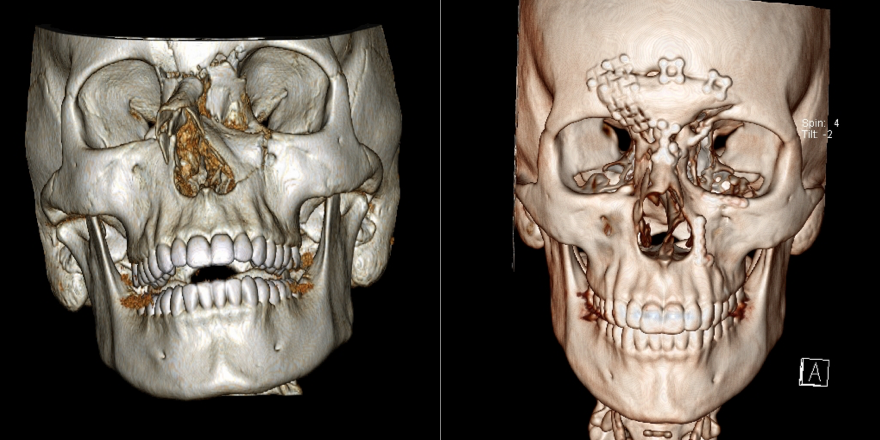Trauma & Reconstructive Surgery
Craniomaxillofacial Trauma
Injuries to the face and neck can be caused by falls, motor vehicle accidents, injuries during sports or work, or from altercations. The goal of the UC Davis Otolaryngology- Head & Neck Surgery and Facial Plastic and Reconstructive Surgery service is to return patients with these injuries to the best possible outcomes using multidisciplinary craniomaxillofacial reconstructive surgery.
The UC Davis Otolaryngology - Head & Neck Surgery service manages a wide range of traumatic injuries of the face in children and adults. The University of California Davis is a major referral center and a verified Level 1 adult and pediatric trauma center by the American College of Surgeons. Few of the 112 Level 1 trauma centers in the US have reached this verification. Our surgeons serve a population from the Northern California region which covers over 30 countries and over 6 million residents.
Our specialists have trained in all aspects of head and neck surgery providing an in depth understanding of not only the bones of the face and skull, but also the facial muscles and structures, as well as the important sense organs (eye, ear, nose and throat). Injuries of these soft tissues of the face and neck need specialized treatment. Our craniomaxillofacial surgery specialists work in interdisciplinary teams with trauma surgeons, dentists, neurosurgeons, and ophthalmologists to best manage these complex patients.
Fractures of the face can range from simple nasal fractures from an inadvertent elbow in a sporting event to a fracture of the eye socket. Patients can present with double vision (diplopia), teeth that don’t line up (malocclusion), or with more extensive fractures of the jaw and face. The more complex reconstructions are treated with the latest technologies such as 3D printing, computerized image guidance, and intraoperative CT scans. Our team offers the full range of management for fractures of the orbit, skull (cranium), temporal bone, naso-orbito-ethmoid (NOE) complex (as shown below), zygomaticomaxillary complex (ZMC), nose, maxilla (upper jaw), mandible (lower jaw), and soft tissues of the head and neck. Injuries to the facial nerve are managed with a full range of nerve repairs, cable nerve grafts, and facial reanimation techniques.
Image: Dimensional CT scan of patient who suffered severe facial and skull fractures from a motor vehicle accident before and after surgical repair of the fractures.



